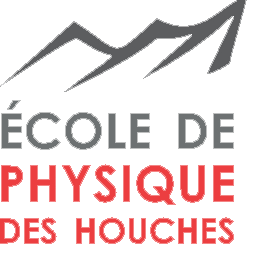Speaker
Description
The high-precision Penning-trap mass spectrometer PENTATRAP (1) is currently being commissioned at the Max-Planck-Institut für Kernphysik in Heidelberg. It aims at mass-ratio measurements of stable and long-lived highly-charged ions with a relative uncertainty of below $10^{-11}$, a precision so far only achieved for a few relatively light elements (2).
The mass-ratio measurement is carried out by determining the free-space cyclotron frequency in the strong homogeneous magnetic field of a superconducting magnet. A unique feature of PENTATRAP are the five cylindrical Penning traps (3), making simultaneous storage of several ion species, a reduction of the systematic errors and simultaneous in-situ calibration as well as reference measurements possible. Long storage times due to a cryogenic environment and dedicated image current detection systems (4) with single ion sensitivity will lead to high-precision determinations of cyclotron frequencies in all traps.
Mass data at this level of precision have numerous applications, especially for tests of fundamental interactions and their symmetries, among others in neutrino physics research (5) or direct tests of the theory of special relativity (SR) (2, 6). For example, PENTATRAP contributes to the determination of an upper limit of the electron neutrino mass on the 1 eV level within the ECHo collaboration (7) by an independent measurement of the $Q$-value of the electron capture transition of $^{163}\mathrm{Ho}$ to $^{163}\mathrm{Dy}$. For this measurement an electron beam ion trap is currently commissioned, employing the wire probe injection technique to efficiently inject and produce highly-charged ions of the very rare $^{163}\mathrm{Ho}$ for PENTATRAP. Furthermore, in collaboration with the Insitut-Laue-Langevin in Grenoble (ILL) a direct test of SR in a process where a mass is converted into electromagnetic radiation is planned as in the neutron capture process of $^{35}\mathrm{Cl}$. The mass ratio of $^{35}\mathrm{Cl}$/$^{36}\mathrm{Cl}$ will be precisely measured at PENTATRAP whereas the photon wavelength is measured by means of crystal Bragg spectroscopy at the ILL.
(1) Repp, J. et al., Appl. Phys. B 107, 983 (2012)
(2) Rainville, S. et al., Nature 438, 1096 (2005)
(3) Roux, C. et al., Appl. Phys. B 108, 997 (2012)
(4) Jefferts, S.R. et al., Rev. Sci. Instr. 64, 737 (1993)
(5) Blaum, K. et al., Contemporary Physics 51, 149 (2010)
(6) Greene, G.L. et al., Phys. Rev. D 44, R2216 (1991)
(7) Gastaldo, L. et al., Eur. Phys. J. ST 226, 1623 (2017)
